In figure mass slides without friction on the horizontal surface, the frictionless pulley is in the form of a cylinder of mass and radius , and a string turns the pulley without slipping. Find the acceleration of each mass, and tension in each part of the string.
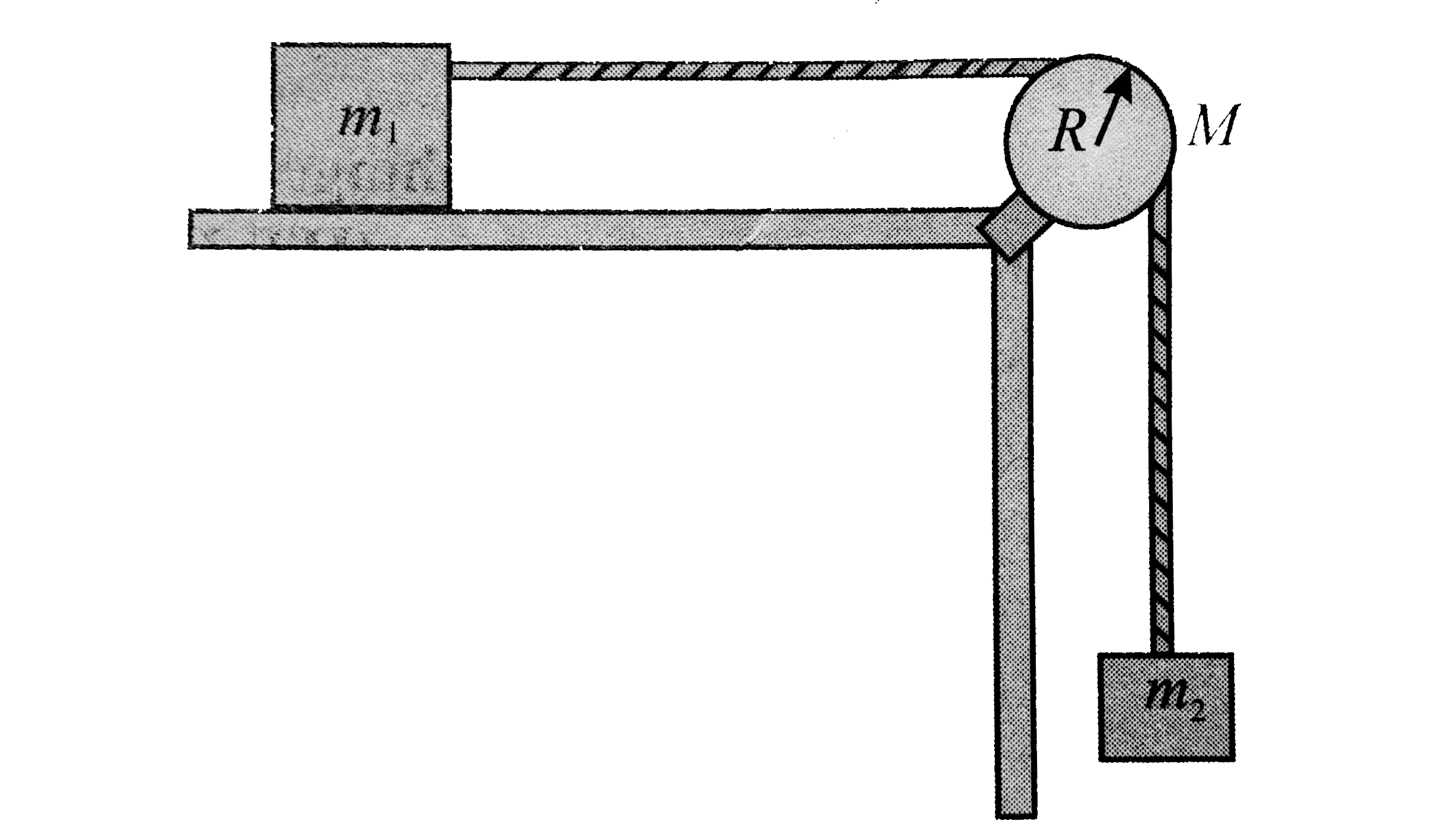
Step I: Analysis of motion: In this case the string rotates the pulley, i.e, the string does niot slide. The puley will have angular acceleration,. Hence, the tension on the string on both the sides of the pulley will not be equal themotion of and will be translational. Positive direction of angular acceleration is taken along the corresponding acceleration which is taken positive in the direction of not force.
Step II: Equation of motion: Let these be and . The equation of motion respectivley, of masses and is
..........i
and ........ii
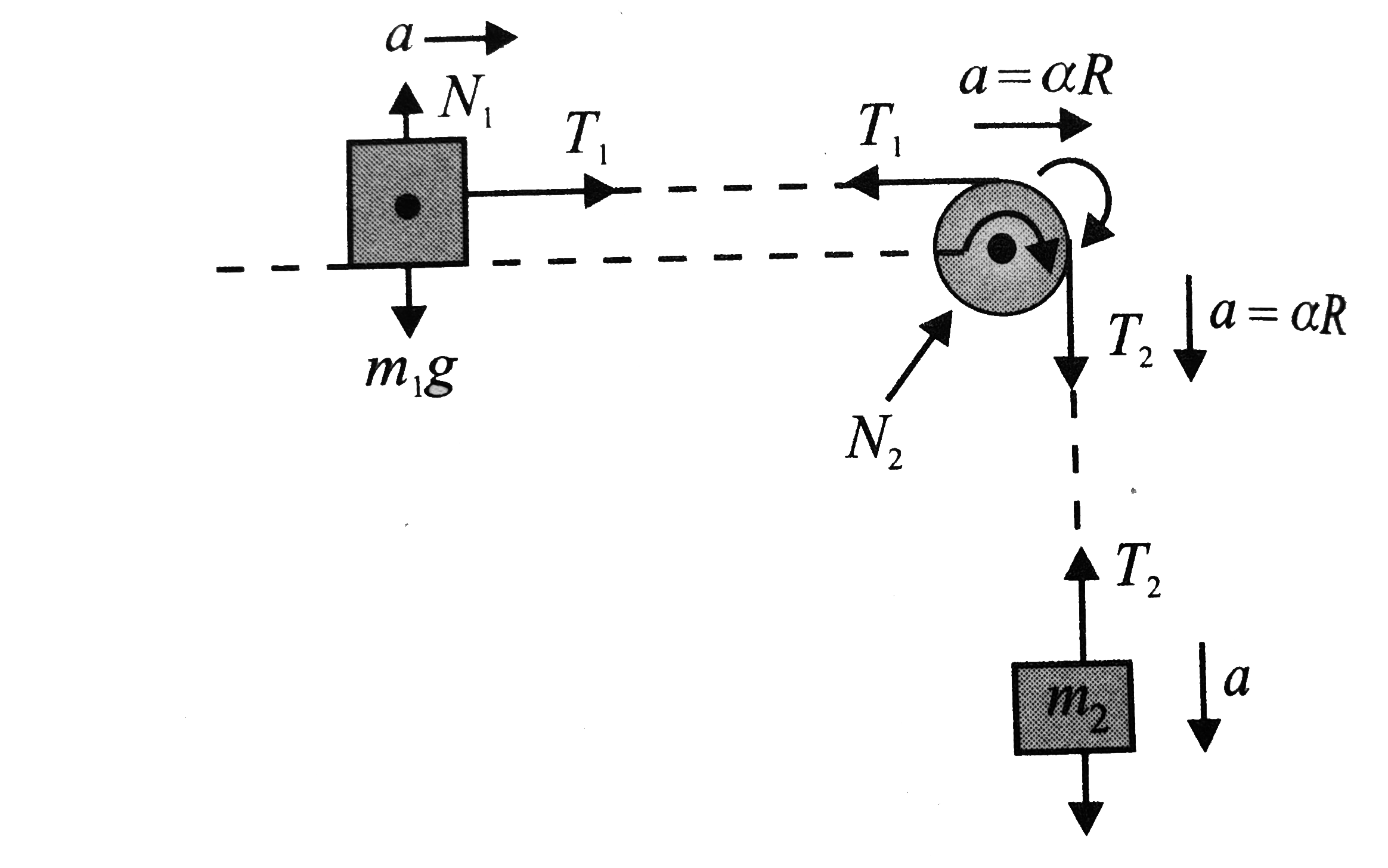
Step III: Application of torque equation
The torque equation for the pulley.
.......iii
constitutes no torque about the axis of rotation)
There is no slipping of the string over the pulley.
............iv
From eqwn iii and iv we get
or ...........v
Step V: Solving equations:
Solving the above equation we get
Here
and
Topper's Solved these Questions
- BOOK - CENGAGE PHYSICSCHAPTER - RIGID BODY DYNAMICS 1EXERCISE - Solved Examples9videos
RIGID BODY DYNAMICS 1
- BOOK - CENGAGE PHYSICSCHAPTER - RIGID BODY DYNAMICS 1EXERCISE - Exercise 2.16videos
RIGID BODY DYNAMICS 1
- BOOK - CENGAGE PHYSICSCHAPTER - PROPERTIES OF SOLIDS AND FLUIDSEXERCISE - INTEGER_TYPE2videos
PROPERTIES OF SOLIDS AND FLUIDS
- BOOK - CENGAGE PHYSICSCHAPTER - RIGID BODY DYNAMICS 2EXERCISE - Interger2videos
RIGID BODY DYNAMICS 2
Similar Questions
Consider the situation shown in the figure. The surface is smooth and the string and the pulley are light. Find the acceleration of each block and tension in the string.
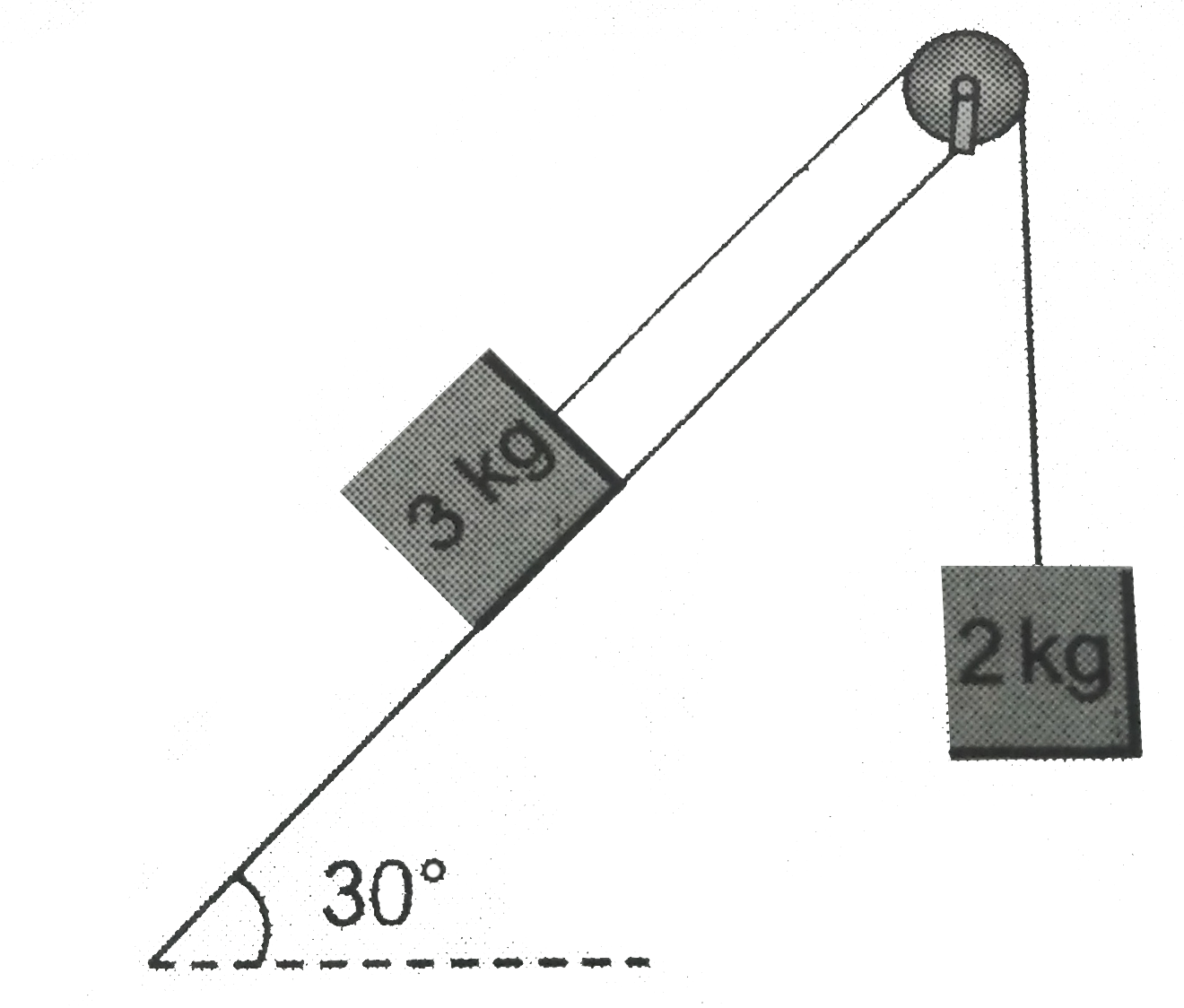 View Solution
View SolutionIn the pulley system shown the movable pulleys A,B and C have mass m each, D and E are fixed pulleys. The strings are vertical light and inextensible Then
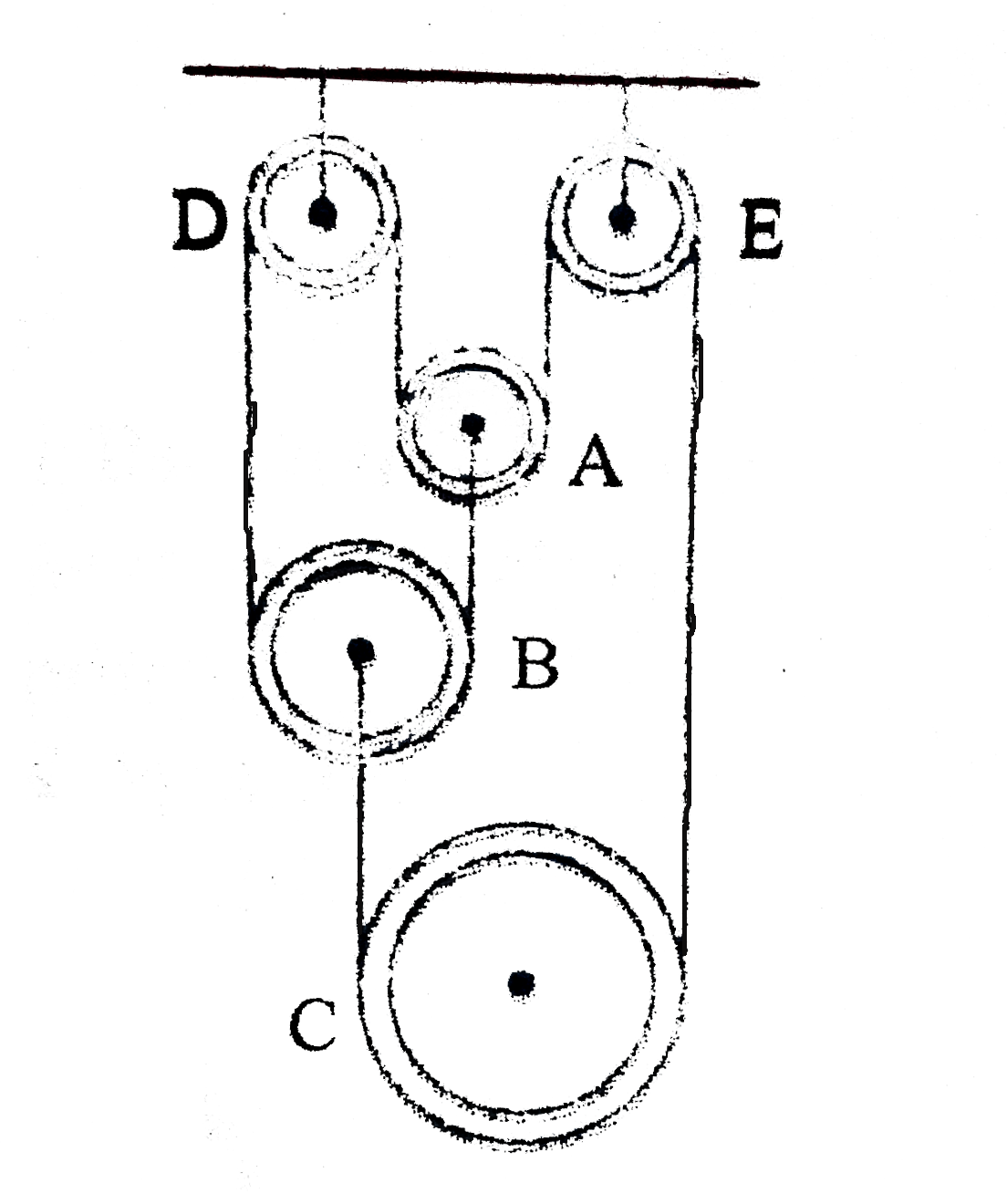 .View Solution
.View Solution
Knowledge Check
- Question 1 - Select One
If the string & all the pulleys are ideal, acceleration of mass m is :-
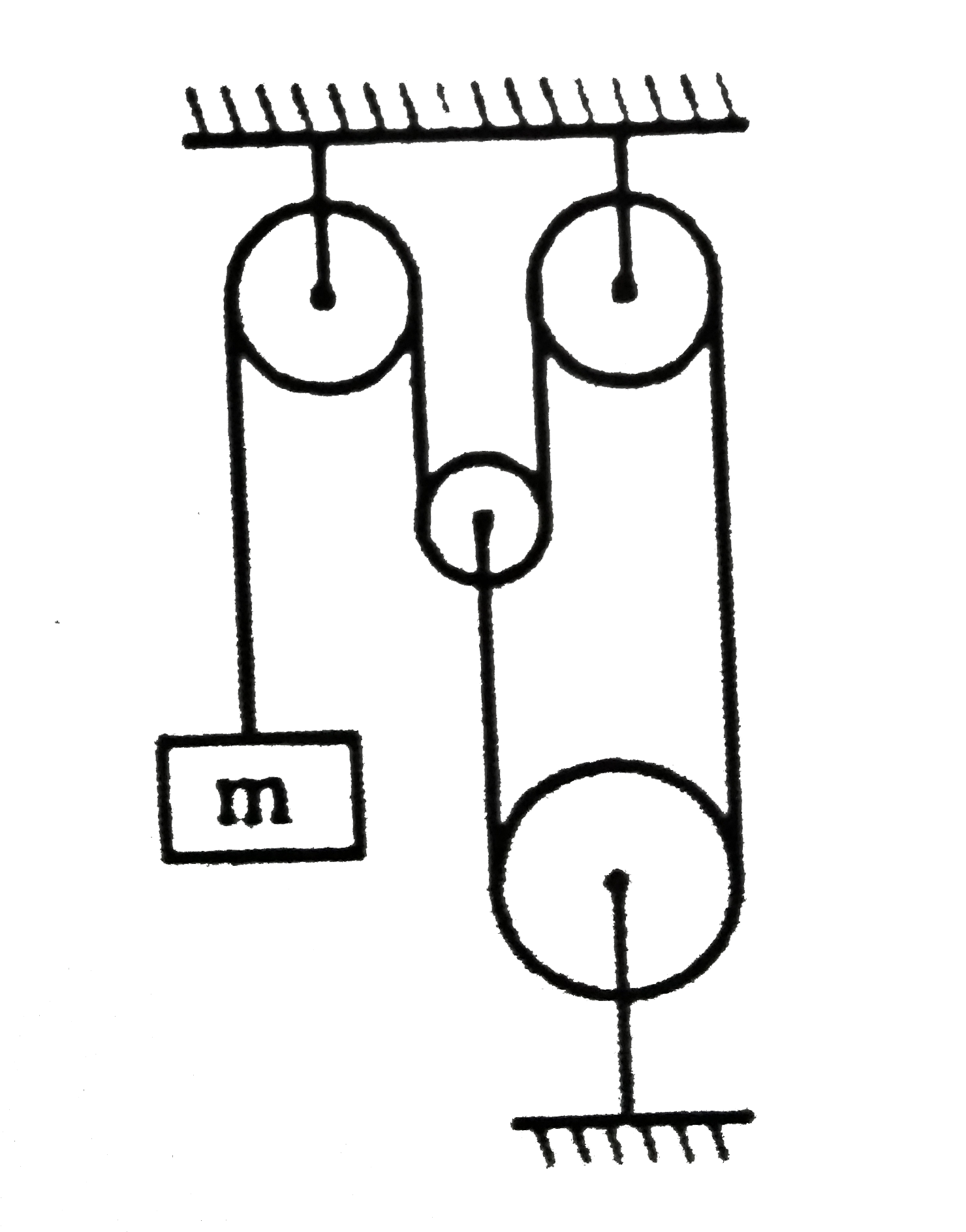 Ag2B0CgDdependent on m
Ag2B0CgDdependent on m - Question 2 - Select One
A string of negligible mass is wrapped on a cylindrical pulley of mass M and radius R. The other end of string is tied to a bucket of mass m. If the pulley rotates about a horizontal axis then the tension in the string is :
AmgB(M+m)gCMmg(M+2m)D2mg(M+2m) - Question 3 - Select One
A solid sphere of mass m and radius R rolls without slipping on a horizontal surface such that vc.m.=v0.
AThe kinetic energy of rotation is 15mv20.BThe total kinetic energy is 710mv20.CThe mechanical energy (assume the ground as reference) is mgR+710mv20.DAll options are correct.
A load of mass m is attached to the end of a string wound on a cylinder of mass M and radius R. The string passes round a pulley.
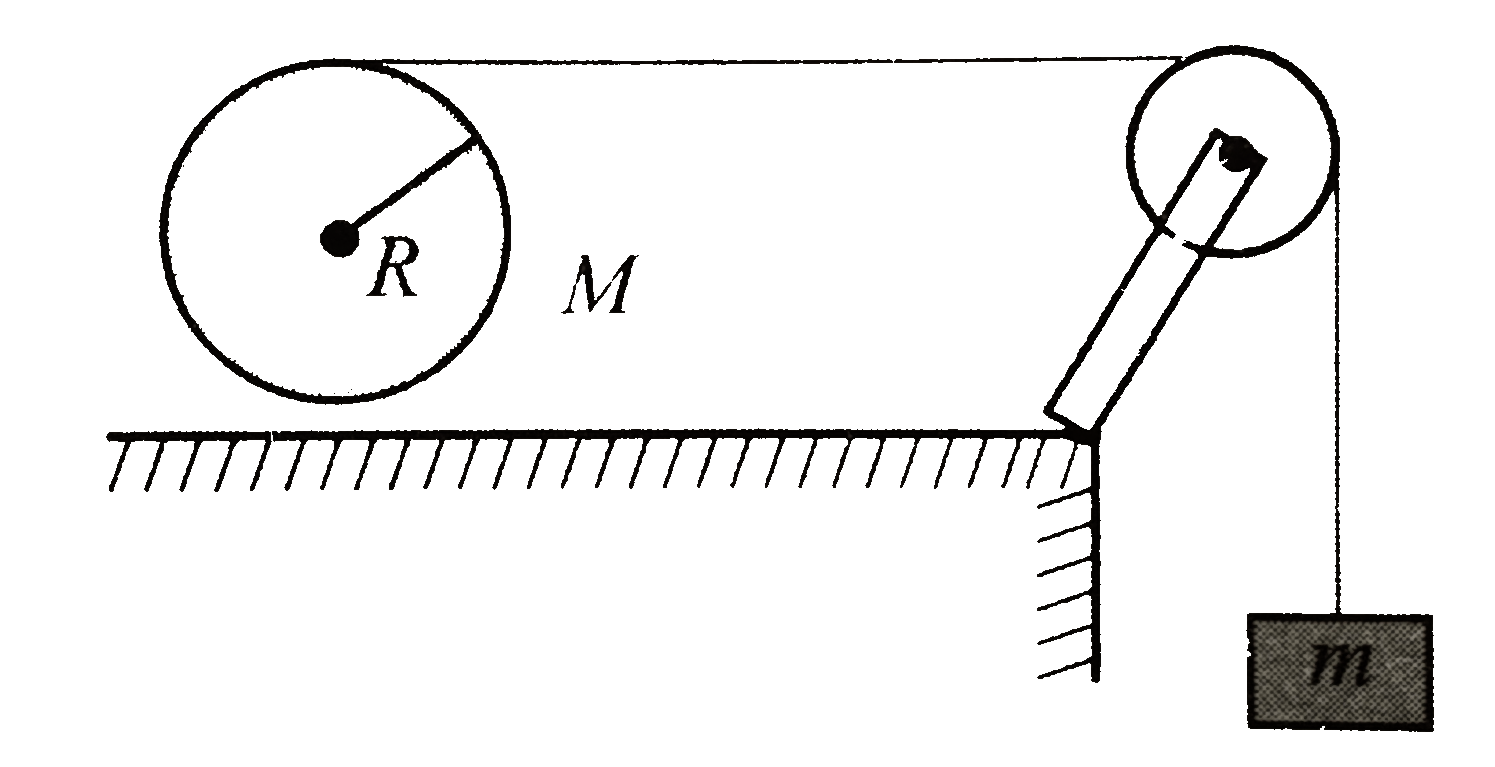
a. Find the acceleration of the cylinder M when it rolls.
b. If the coefficient of friction is μ. Find the accelerative of the cylinder when it slips and rolls.
c. Find the minimum value of coefficient of friction for which the cylinder rolls alwaysView SolutionTwo blocks are connected by a string that passes over a pulley of radius R and moment of inertia I. The block of mass m1 sides on a frictionless, horizontal surface, the block of mass m2 is suspended from the string. Find the acceleration a of the blocks and the tension T1 and T2 assuming that the string does not slip on the pulley.
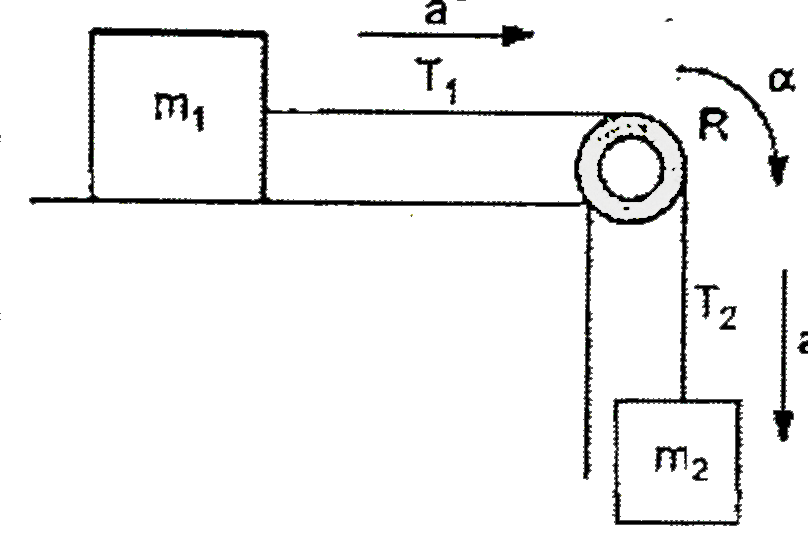 View Solution
View SolutionAn extensible string is wound over a rough pulley of mass M1 and radius R and a cylinder of mass M2 and radius R such that as the cylinder rolls down. The string un wounds over the pulley as well the cylinder. Find the acceleration of cylinder M2.
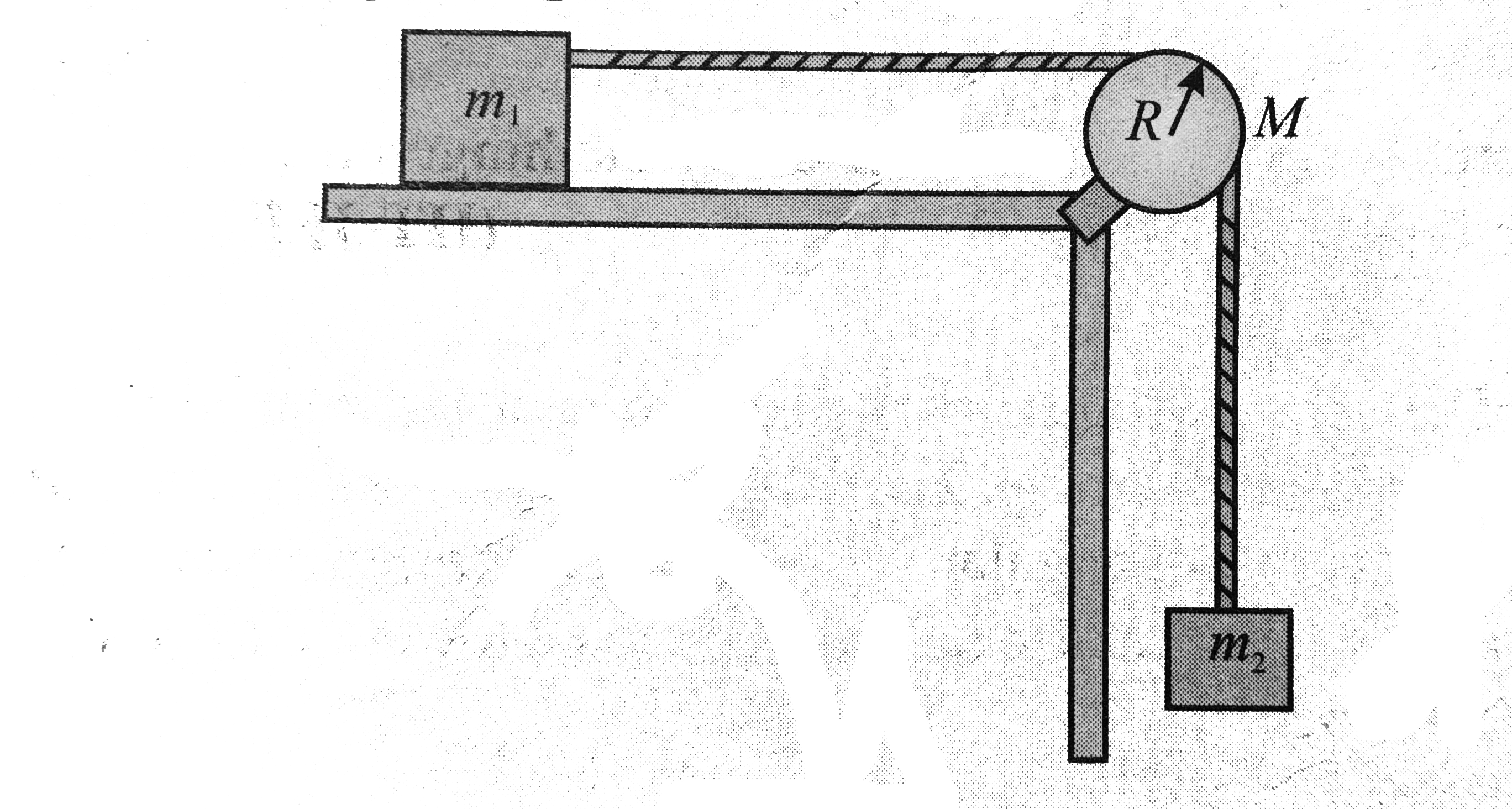 View Solution
View SolutionA block of mass m is attached at the end of an inextensible string which is wound over a rough pulley of mass M and radius R. Assume the string does not slide over the pulley. Find the acceleration of the block when released.
View SolutionA mas m hangs with help of a string wraped around a pulley on a frictionless bearling. The pulley has mass m and radius R. Assuming pulley to be a perfect uniform circular disc, the acceleration of the mass m, if the string does not slip on the pulley, is:
View Solution

